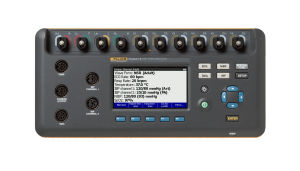Patient care and safety are top of mind for hospital quality assurance professionals. Vital signs monitors affect patient care. These critical medical devices are used in diagnoses that influence patient treatment. Incorrect diagnoses due to inaccurate readings from a poorly-performing patient monitor could put a facility at risk for costly litigation.
Performance checks for patient monitors are required by a variety of standards, and are a primary area of focus for groups like The Joint Commission, AAMI and ECRI. Below are a selection of standards you can reference when building your patient monitor quality assurance plan.
The Joint Commission (JC) hospital accreditation manual in Environment of Care (EC) section
- EC.02.02.01 EP 2
– Requires Clinical Engineering maintain an inventory, including any new devices introduced to the system
- EC.02.02.01 EP 3
– Requires a maintenance system is in place that assures reliable equipment function
- EC.02.02.01 EP 4
– Requires a documented plan for maintenance intervals
- EC.02.02.01 EP 6
– Requires written procedures for managing equipment failures
- EC.02.04.03 EP 1
– Requires that all equipment is checked for safety and functionality before initial use
- EC.02.04.03 EP 2
– Requires that life support equipment is maintained, within schedule, at 100%
- EC.02.04.03 EP 3
– Requires maintenance on all non-life support, within the department’s own guidelines
- EC.04.01.01 EP15
– Requires an annual evaluation of the equipment management plan, with revisions
NIBP and ECG standards
- OIML (Edition 2002) International Organization of Legal Metrology
– R-16-2: Standard for non-invasive automated sphygmomanometers
– R-90: Electrocardiographs: Metrological Characteristics – Methods and Equipment for Verification
- ANSI/AAMI EC 13: 2002/ rev 2007 and IEC 60601-2-27
– Standard for cardiac monitors, heart rate meters, and alarms
- China JJG 692 2009
– Standard for non-invasive electronic sphygmomanometers
Pulse Oximetry standards
- ISO 9919:2005(E)
– Medical electrical equipment: particular requirements for the basic safety and essential performance of pulse oximeter equipment for medical use. (International Organization for Standardization)
- ISO 80601-2-61 (publication pending)
– Medical electrical equipment - Part 2-61: Particular requirements for the basic safety and essential performance of pulse oximeter equipment for medical use. (International Organization for Standardization)
- United States Food and Drug Administration (1992)
– General guidance document, device: noninvasive pulse oximeter

